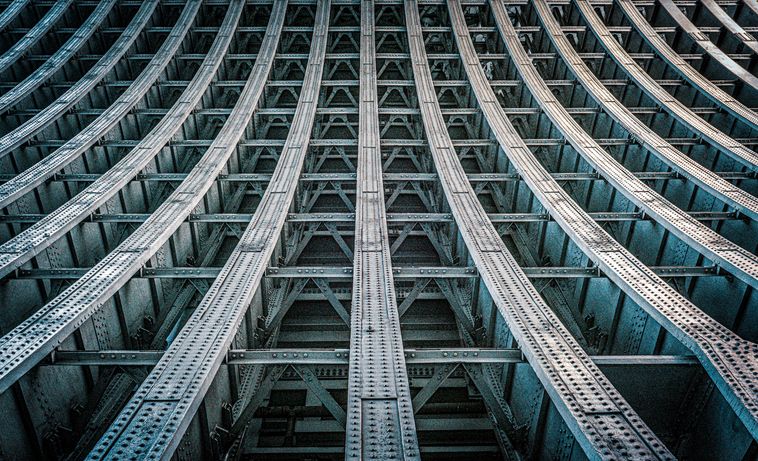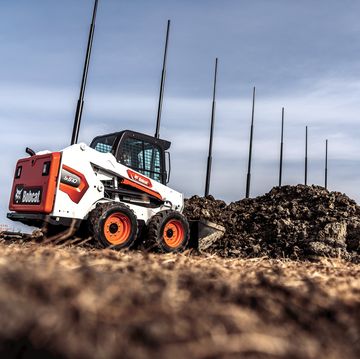After a fatal crash and resulting fire brought down a section of Interstate 95 in Philadelphia recently, a shocked public wondered how a 105-foot span of roadway could just collapse.
Depending on where they stand, bridges are built to resist not only heavy weights and powerful impacts, but also high winds, floods, earthquakes, and even tornadoes. Yet—unlike office buildings and other structures that hold people—bridges are not built with fire safety in mind. So when a tanker truck carrying 8,500 gallons of gasoline crashed beneath the I-95 overpass and caught fire, the resulting inferno caused the bridge’s supportive steel bones to soften. Soon, the whole structure weakened and completely gave way, and hundreds of tons of steel and concrete landed on the road below.
The incident is just one more in a series of fires that have brought down bridges across the U.S. for decades. While relatively rare, bridge collapses have cost the country billions of dollars in lost transportation and related economic costs, as well as caused deaths.
A steel bridge exposed to the heat of a fire can fail in 20 minutes, says Venkatesh Kodur, a Michigan State University civil and environmental engineering professor, who would like all fire-susceptible bridges in the world to be made fireproof. Kodur is the founding director of the university’s Center on Structural Fire Engineering and Diagnostics; it’s the first testing facility of its kind in the country, where researchers model all kinds of structures, including buildings, airports, tunnels, and steel bridge girders, for fire-resistant design.
✅ Steel girders are long, sturdy lengths of steel in bridges that form the main horizontal supports. They also support smaller beams and help the overall structure take on heavy loads, such as the deck, which is the roadway structure that covers the top of the bridge.
In the first 15 to 20 minutes of a fuel blaze, the temperature is hot enough to soften steel until it warps and bends. The steel girders in the I-95 overpass may have reached 1,800 degrees Fahrenheit, Kodur says. At 1,000 degrees Fahrenheit, steel will retain only 50 percent of its strength at room temperature, he says. And by the time it hits about 2,800 degrees Fahrenheit, the steel can only hold onto 20 to 30 percent of its strength—so it buckles, unable to support even its own weight.
Yet a clear fix exists, says Kodur. Fire insulation will delay heat from reaching the steel for an hour or an hour and a half. By then, firefighters should be able to put out the blaze.
Civil engineering professor Nur Yazdani also believes that making bridges fire-resistant is necessary. He specializes in bridge design and looks for solutions to design stronger bridges at the University of Texas at Arlington.
However, thousands of bridges span American roads, and it’s impractical to fireproof them all. A practical strategy is to pinpoint all of the “energy corridors,” or roadways that support many fuel tankers, Yazdani says. You can also be smart about which sections of a bridge you fireproof—in a multi-lane highway, it makes more sense to protect areas closest to the lanes that usually carry truck traffic, for example.
Fireproofing Bridges Is a Straightforward Solution
Retrofitting bridges for fire safety could mean simply spraying the girders and even the concrete with a fireproof coating, Yazdani says. His tests show that about 1 inch of a fire-retardant layer is enough to minimize structural damage and prevent a collapse.
A few years ago, Yazdani’s research team built a full-size concrete bridge, about 50 to 60 feet long, and put it to the ultimate fire test with a grant from the Texas Department of Transportation. It was fully concrete so the team could simulate most bridges in Texas. “We built a gasoline tank underneath, and literally put that gasoline tank on fire… chunks of the concrete fell down,” Yazdani says. The temperature reached roughly 2,000 degrees Fahrenheit over the 30-minute test of fire conditions. “At that temperature, steel has no chance.”
The team then transported the damaged beams to the lab at UT Arlington, where they tested them for strength and retrofitted them with spray-on fireproofing. Then they repeated the test and found that the residual strength of the damaged concrete was 50 percent higher after fireproofing it.
“We have been talking to the federal highway and Texas Highway Department for many years now, to say that we need to do something about bridges on fire,” Yazdani says.
Kodur has been talking to governments and engineers involved in building bridges for decades as well, advising them that fire resistance should be a part of bridge construction and refurbishment. The main pushback is because of cost, he says.
You can watch a livestream of the I-95 bridge being rebuilt here:
But applying fire-resistant insulation to existing bridges would cost only about 6 or 7 percent of the original expense, Kodur says. And incorporating that insulation in the construction of a new bridge would make up even less of the price tag—about 5 percent. “Remember, these bridges are designed to last 100-plus years. So this is nothing, putting in 5 percent,” he says.
Steel that can withstand very high heat does exist. While heat-resistant steel is used for furnaces, incinerators, and heat exchanges, withstanding temperatures of 5,000 degrees Fahrenheit, it’s not cost-effective or easily implemented for bridge construction. It would enhance fire resistance in structures such as buildings or bridges only marginally, Kodur says.
What’s Next for the I-95 Overpass
For I-95, crews are not reconstructing a proper overpass right away, because it may take months, says Yazdani. Instead, they are turning 2,000 tons of lightweight glass nuggets into lightweight—but strong—building blocks that will hold up the new roadway. With construction continuing around the clock, the temporary solution should be ready for vehicles in just weeks, Yazdani says. Supply chain issues would otherwise cause a delay in reopening this section of highway, says Pennsylvania Governor Josh Shapiro, though he declined to specify the expected delay time in an AP News article.
For now, more accidents that lead to bridge failures and major transportation disruptions are inevitable, say Kodur and Yazdani.
Bridges have collapsed in other parts of the U.S. and the world before. In a nearly identical scenario in April 2007, a tanker truck fire directly beneath a steel girder bridge in Oakland, California caused the bridge to collapse.
Between 1980 and 2012, the U.S. experienced 30 fires leading to bridge collapse, according to a study of U.S. bridge failures at the University at Buffalo in New York.
Before joining Popular Mechanics, Manasee Wagh worked as a newspaper reporter, a science journalist, a tech writer, and a computer engineer. She’s always looking for ways to combine the three greatest joys in her life: science, travel, and food.















